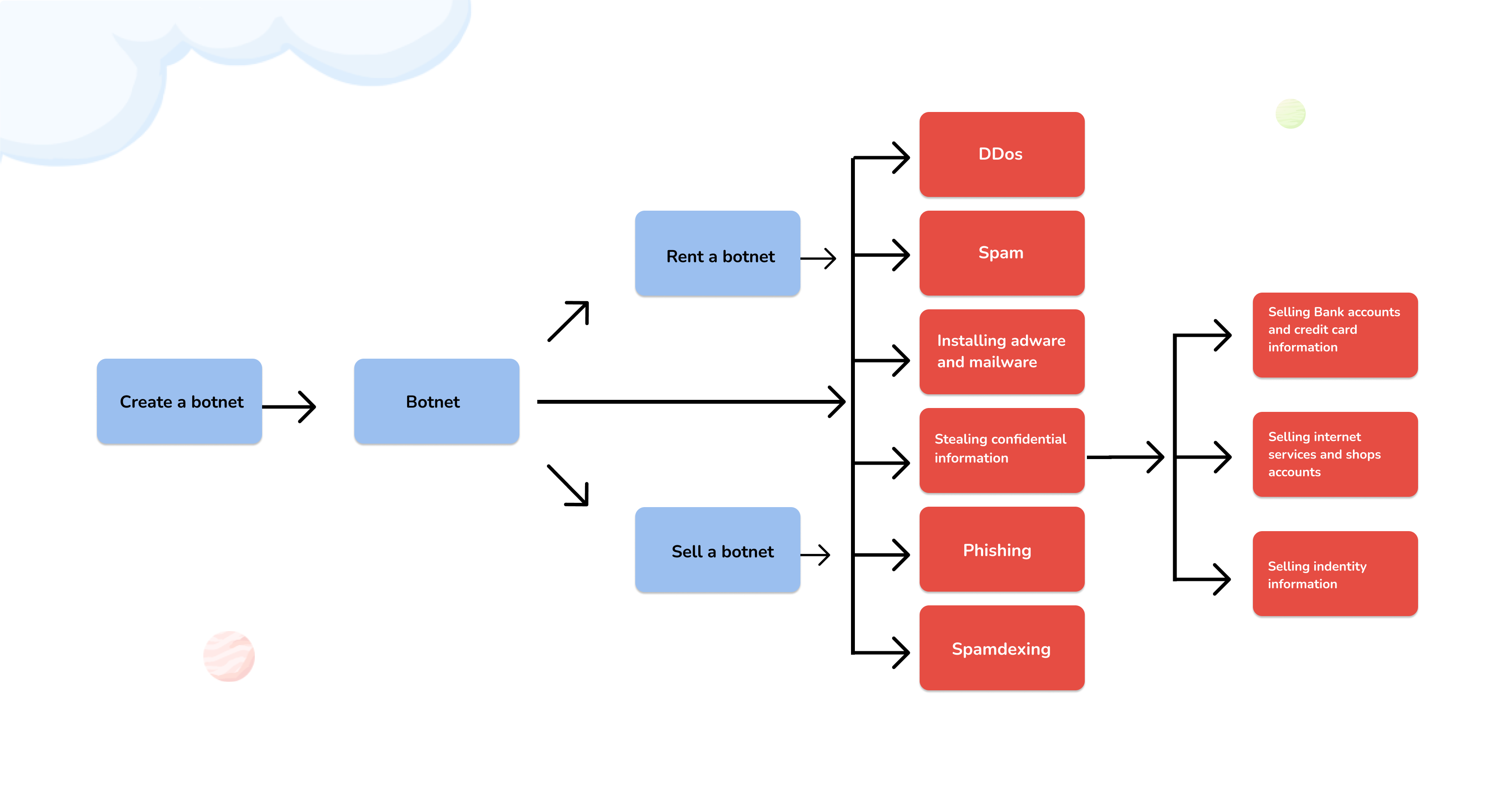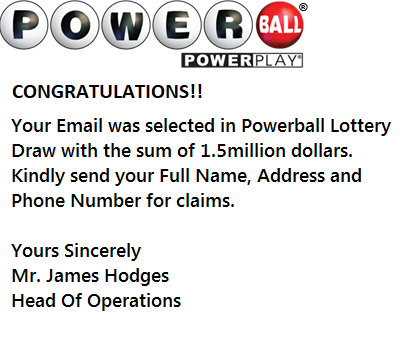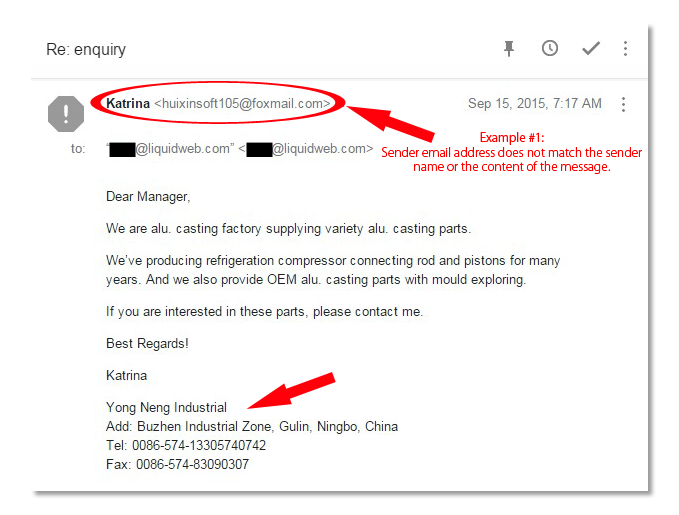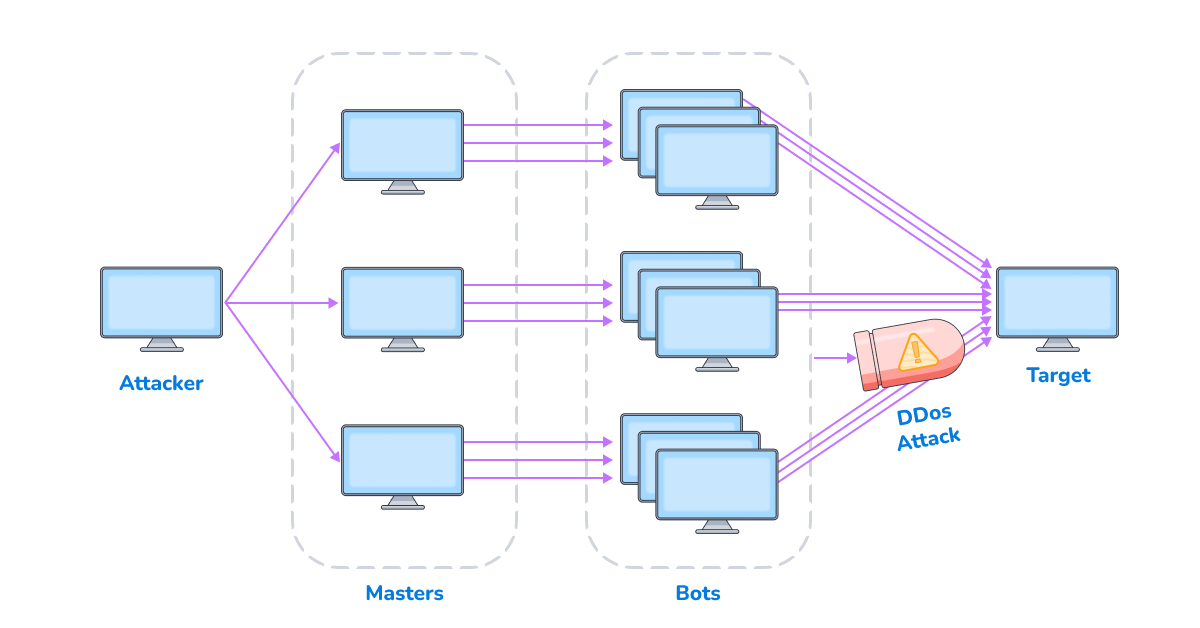On the other hand, an email spammer bot continuously collects your subscribers’ email addresses crawling your website to send bulk emails and flood their inboxes. What if subscribers who regularly open your newsletter can’t find your emails in the flood of thousands of unexpected emails in their inboxes? Surely, it will reduce your open and click rates and hamper the email marketing campaign.
EarthWeb claims that more than 31 billion email bounces happen daily.
It means 10% of all emails bounce back to the sender daily, and the bot emails are responsible for this. For that, businesses face major problems with significant profit loss.
Businesses have cost 20.5 billion dollars annually due to Bot emails, according to DataProt.
Unfortunately, neither email marketing tools nor ESPs can solve these problems 100%. But there are ways to come over.
What Is an Email Spammer Bot?
An email spammer bot is a program written for collecting email addresses by crawling websites and sending automated content to those addresses. You attract spambots to find you whenever you share your email addresses on any website. A spambot has two features:
- A web crawler
- An email sender
A web crawler crawls the website to find out the emails the subscribers share for newsletter updates. On the other hand, the sender of the email spam bot sends automated content to the collected addresses without segmentation. Using AI and contextual investigation, the email bot also delivers responses to customized emails to automate engagement with the subscribers.
According to a study, more than 333 billion emails were sent daily in 2022, meaning 3.5 million per second; 85% of them are spam emails automatically generated by spambots.
As a result, the massive bot email challenges your business as the customers might not find you in the flood of emails in their inboxes, which will hamper your lead nurturing strategy.
How Do Spambots Steal Your Leads?

Lead is someone showing interest in your business by providing their email address to get updates from you. A lead must know your business and expect to hear from you often. On the other hand, users of auto-generated emails don’t know about your business.
There are many spammers worldwide to steal your customers’ email addresses and then run fraudulent activities using them. They use bots to collect many addresses from various sites such as blogs, forums, social media sites, chat rooms, etc.
The name of the process of collecting emails from multiple sites is scraping. The scrapper and the email spam bot are identical in some perspectives. Once someone creates a bot to crawl your website, the bot will continuously grind for visible emails, except if you don’t take any action to prevent it. Your site’s comment and live chat boxes are potential targets to crawl as users are mostly visible there.
As a businessman, you must grant it a great practice to collect leads from various forums, such as social media sites or chat rooms, in an organic way. The spammers know it very well. The crawlers or email bots crawl through your networks where your leads log in with their emails.
And also, the spammers design malicious programs and codes to control the PC you use to run your business. It is much easier to track the activity on your PC after ensuring the programs inside it. They can also use your computer to collect emails from other business organizations connected to you. When your PC is under their control, it becomes a botnet. The spammer is a botnet operator operating your PC with automated programs and malicious codes.
What do the Spammers do with Your Leads?
Spammers aim to earn money by operating fraudulent activities in the most negative ways. They collect your subscribers’ IDs and other important pieces of information with the help of an email spam bot to send bulk emails. The main goal of a spam bot is to create a massive list of emails to automate an advertisement campaign. You might ask which products or services they would run for advertisements. The answer is they don’t sell products or services, and that’s why it is called fraudulent.
They attract customers with fake content to click on the link they send through email. Subscribers click the link, allowing the malware to enter their PC from these sites. After that, the PCs will become Botnets controlled by spammers.
What do the Spammers do with Botnets?

The spammers aim to create traps for your visitors. Once the visitors fall into their traps, they start facing awful malpractices without knowing what is happening. A botnet can run fraudulent activities by itself as the spammers program the malware. It can create another botnet sending more fraudulent emails as a trap with engaging but fake content containing links to the scam sites. This is such a continual and never-ending process that keeps collecting email addresses from one network to another.
NetScout claims that, in 2021, the number of DDoS attacks was 9.7 million, and the increase rate of such attacks is 11% yearly.
The botnets can generate much information such as bank account numbers, card numbers, and other security-related digits.
EarthWeb claims that 44% of all cyber attacks in 2021 targeted bank accounts, online retailers, or card numbers.
The spammer can sell those numbers on the dark web or steal money on their own, hampering the economic condition of your subscribers.
ShadowServer states that spammers attacked various sites 190,000 times using botnets in 2008, and it made more than 20 million dollars for cybercriminals.
This enormous amount of money excludes income from blackmailing. When a spammer takes control of your site, they can blackmail you by demanding ransom, which is money to give your site back to your hand. What if they turn your business off for two days if you don’t provide them with the money they want?
According to Kaspersky, a botnet can send one thousand emails per minute, making $2000 per month.
As said before, one botnet can produce another when the users fall into its trap. So, it takes almost nothing for the spammers to earn unlimited illegal money.
What Types of Emails Does The Email Spammer Bot Send to Your Leads?
Sending bulk emails is the primary target of the email spammer bot. The more email addresses the spam bot has, the more traps it can send customers. There are various other traps as well.
1Money Scam
Email users might receive an email that they won a lottery of $50,000. They also state that the receiver can cash out the money under certain conditions. The sender might want the receiver to take action or send the information. Here is an example of a money scam message.

2Malware Warning
Email users get warnings through email or browsers about malware working actively on their computers. These email senders claim that they have the solution to the problem by providing a link. This way, they attract the users to fill up a form to gather information. Cybercriminals can use that information for any purpose they want. Besides that, visitors who install that software are permitting malware to turn your PC into botnets.
3Fraudulent ADs
Almost every email user has this kind of fraudulent email in their inboxes stating that the receivers will get weight loss pills or coupons for free if they take the action the sender wants. The step can be like filling out a form or downloading and installing something on the visitors’ computer. Fraudulent ads can easily manipulate users to fall into that trap. Here is an example for clarification.

4Spoofing
Users might get emails that originated from someone they already know interacting with them before, making the receivers mind that this is not spam. This way, the spammers can fool your leads completely. When your leads follow the senders, they give away their control over their computers. A sample of spoofing emails can clarify the fact.

5Hoaxes
This spam email will melt your visitors’ hearts by fantasizing about things. People tend to fantasize about something that the spammers consider. Suppose you are a man who fantasizes about special foods and has a great taste that makes you overweight. You will mostly feel happy if someone says, “Eat more food and lose weight,” or “Lose weight in only five days without changing food habits.” Then, there is a probability for you to click the subject line to claim this lucrative offer. These types of spam emails are psychologically strong enough to manipulate your visitors.
6Chain Messages
Many users receive this kind of email daily and may take action according to the senders’ instructions. This message can be like, “Send this message to 100 people, or you will die,” or, “Share this to 100 people and hear good news within 2 days”. An example is worth mentioning to clarify the fact.

7Adult Content
It is the easiest way for spammers to attract email users with adult content, as people tend to follow these types of content. Visitors who click on the adult activity link fall into their trap. The link will lead them directly to a scam page containing malware to take control of their entire device, including laptops, mobile devices, tablets, and PCs.
8Threat Content
After collecting enough information about valid email users, the spammers might threaten them with their personal life by exposing certain things to social media. A botnet can use a laptop or phone webcam to take a video clip or track the users using GPS devices. Moreover, they can know how much money the user has earned from any property they care about, making the email receivers feel threatened. What if someone gets an email like this?

What damage can an email spammer bot do to your business?
In 2019, The FBI recorded more than 3.5 billion dollars in losses due to fraudulent activities online.
The Internet Crime Complaint Center (IC3) received 467,361 complaints that year in the USA. An official from IC3, Donna Gregory, stated that cybercriminals are savvy enough to implement new tactics to carry out the scams they spread. She also said that the differentiation between real and fake is becoming harder as criminals are becoming sophisticated and sufficient with their activity and tactics.

Spammers can target your business in many ways.
DDoS Attacking
If cybercriminals target your business, they can assemble many botnets to work together to take control of your website. As a result, you might face numerous problems with unnecessary hassles and unexpected traffic after the occurrence of this attack. The spammers assemble several botnets to attack a large-scale or a firm target. This type of attack is familiar with the name DDoS (Distributed Denial-of-Service).

Traffic Flooding
Spammers have unlimited email addresses to flood your website with useless leads. You can design a marketing campaign for the actual visitors interested in your business. But, a bot email visiting your website doesn’t have a real user. Instead, this is an automated ID having no interests. There is no probability for you to grow your business with these kinds of emails.
Hijacking Domain
The spam bot can hijack your domain. What if your potential customers find fraudulent content through email from your business? Surely, it will reduce your business reputation and lower your email deliverability, as your recipients might mark you as spam. The email spammer bot can undo all your strategy of collecting organic leads in a matter of a moment.
Fake Sign-up
The botnets can automatically create fake accounts on your website as the spammers design the bots to fill out forms. Various sites have various ways to sign up, such as filling out a form. You will face problems maintaining your business’s sales funnel as fake data spoils your decision-making.
Negative SEO
An email spammer bot can damage the entire SEO strategy you built for years within a minute. Cybercriminals can automate inserting spammy links on your website or copy the content on other sites, leading you to lose traffic. They can also redirect many links to other scam sites that Google doesn’t like. As a result, many fake visitors and their comments will discourage real visitors as most of them are unaware of the spam. Mostly, Google is mindful of the relevance to your content. You will lose the attention of that search engine if your site contains lots of fake accounts and auto-generated spam content.
How to make your visitors feel secure from spambots?
If your visitors can’t feel secure on your website, they won’t keep the connection with your business. As a result, they will mark you blacklisted when sending lead nurturing emails. To ensure security, you must first detect and monitor fraudulent activities on your website, as these steps depend on it.
According to a study, bad bots ensure 40% of all traffic, while in North America, 67% of traffic is from spambots.
If almost half of the traffic is under the spammers’ control, how can you ensure your security without taking any steps? Generally, the owner of a fake account has a suspicious username. When the bot auto-generates the contents, the tone of the texts always makes the reader feel urgent. In most cases, machine-generated content has grammatical mistakes and contextual errors. If you find any link in the forum or comment section that is strange and not authoritative, you have reasons to be worried. If you find an excessive increase in traffic for the first time to your website, don’t get too happy. Instead, check if the visitors are real or fake.
But, it is always better to be proactive before an attack than reactive when the attacker knocks on the door. Some practices are worth mentioning.
Implement reCAPTCHA
A small javascript code, reCAPTCHA, can help you from fast fraudulent sign-up on your website. You can implement this javascript on the sign-up forms. This method can’t ensure 100% security, but it will effectively stop the flood of fake accounts.
Implement Double Opt-in
You can implement double opt-in to any section that can catch the spammers’ attention, such as subscription forms, sign-up forms, or comment boxes. If you use the double opt-in process, the visitors will get a confirmation email with a link. They can confirm their consent with that sign-up or comments by clicking the link.
Honeypot Field
Double opt-in might reduce the visitors’ activity as it sends them to their inboxes to confirm their actions. Double opt-in may ensure your security, but it breaks the user’s rhythm.
Honeypot Field is the alternative here, as the visitors won’t see anything that distracts them from what they are doing.
How to Avoid Being Spammed While Running Email Marketing Campaigns?
Cybercriminals create automated content and send them to email users for fake marketing. People worldwide have been facing these cybercriminal activities for many years. As claimed, 85% of all emails are fraudulent; most contain scammers’ website links. People fear the spammers as they know they can lose control of their PCs, identities, or bank account numbers. The fear prevents them from opening an email that seems spam and leads them to report it as junk.
If you write content with unbelievable offers that the spammers do, the conscious email users might mark you as blacklisted. On the other hand, those who are unaware of their inboxes have a flood of unexpected bulk emails. Naturally, they won’t find your newsletter updates in that pool of emails.
According to Nucleus Research, each user receives 21 spam messages daily.
The good news is that ESPs provide an option called “Whitelisting.” It is impossible to clean up the inboxes every day, and considering this, the email service providers let the users mark the senders whitelisted. The ESPs display the whitelisted emails in the recipients’ primary inboxes. There are good practices to make the recipients put you in the safe sender list. As a business person, it would be great for your organization if you follow these.
So, don’t send bulk emails to someone who doesn’t know your business correctly. Avoid doing what an email spammer bot does if you want to stay away from cybercriminal activities.
With the help of AmazonSES, MailBluster can provide you with the most cost-effective and secure email infrastructure.
Though the process of creating an AWS account and following AWS security best practices is complicated compared to others, it will be your best solution from email spammer bots.



 Contents
Contents
